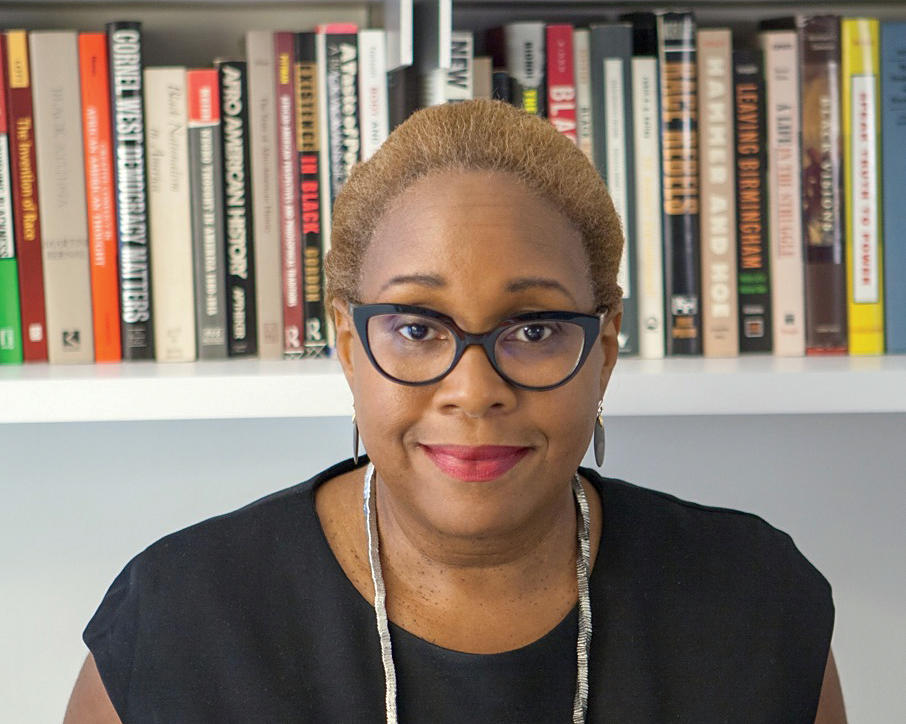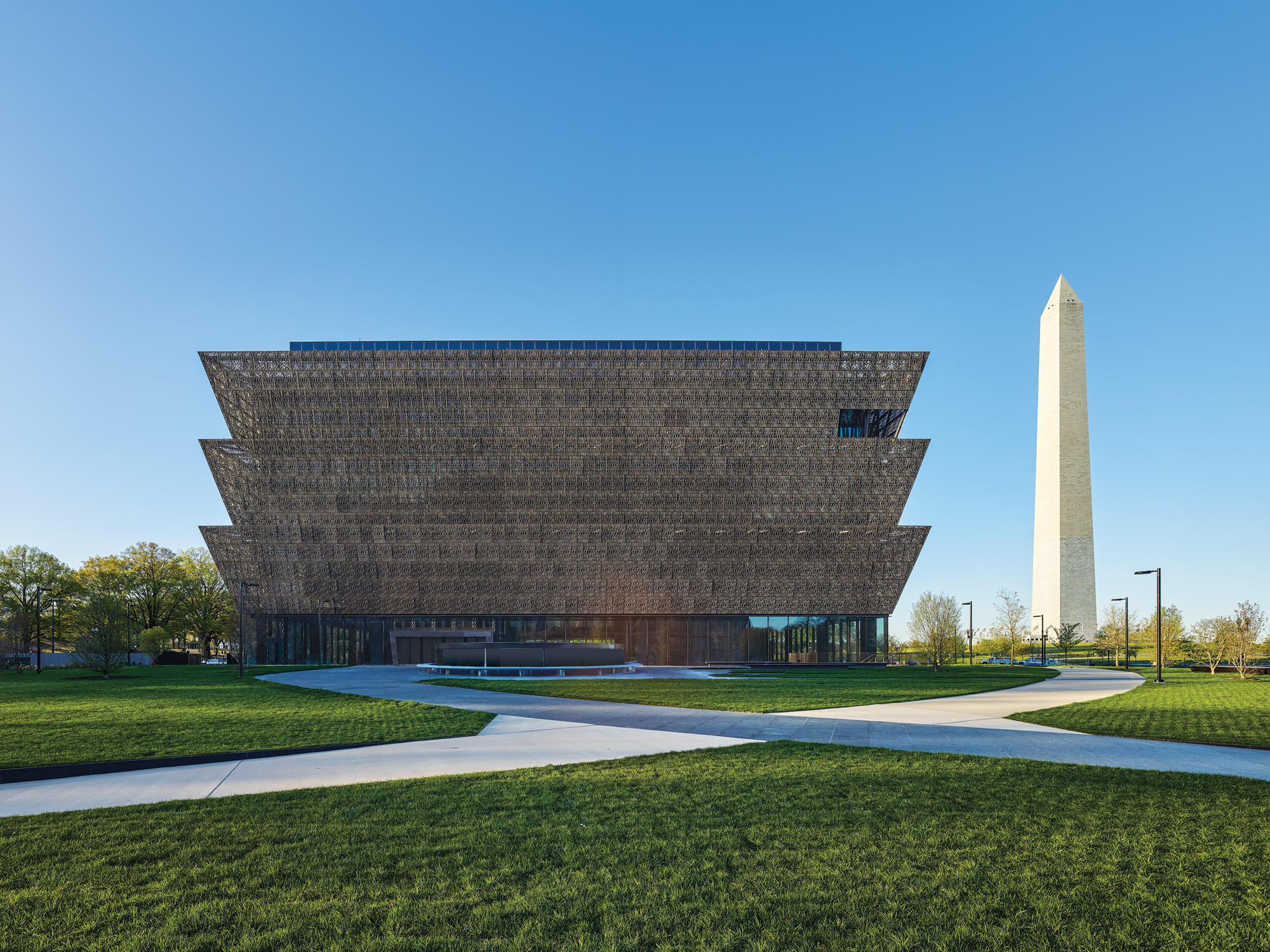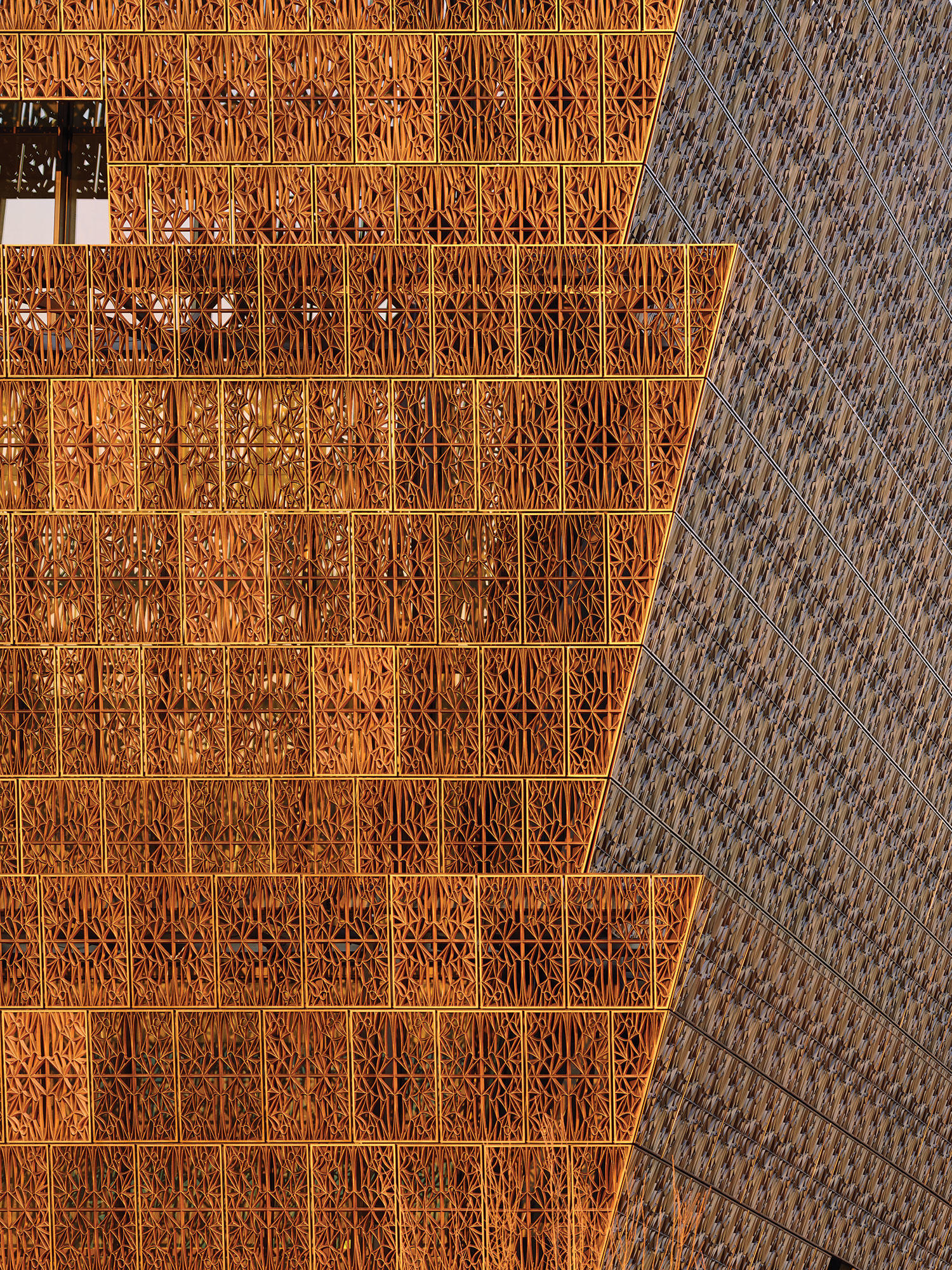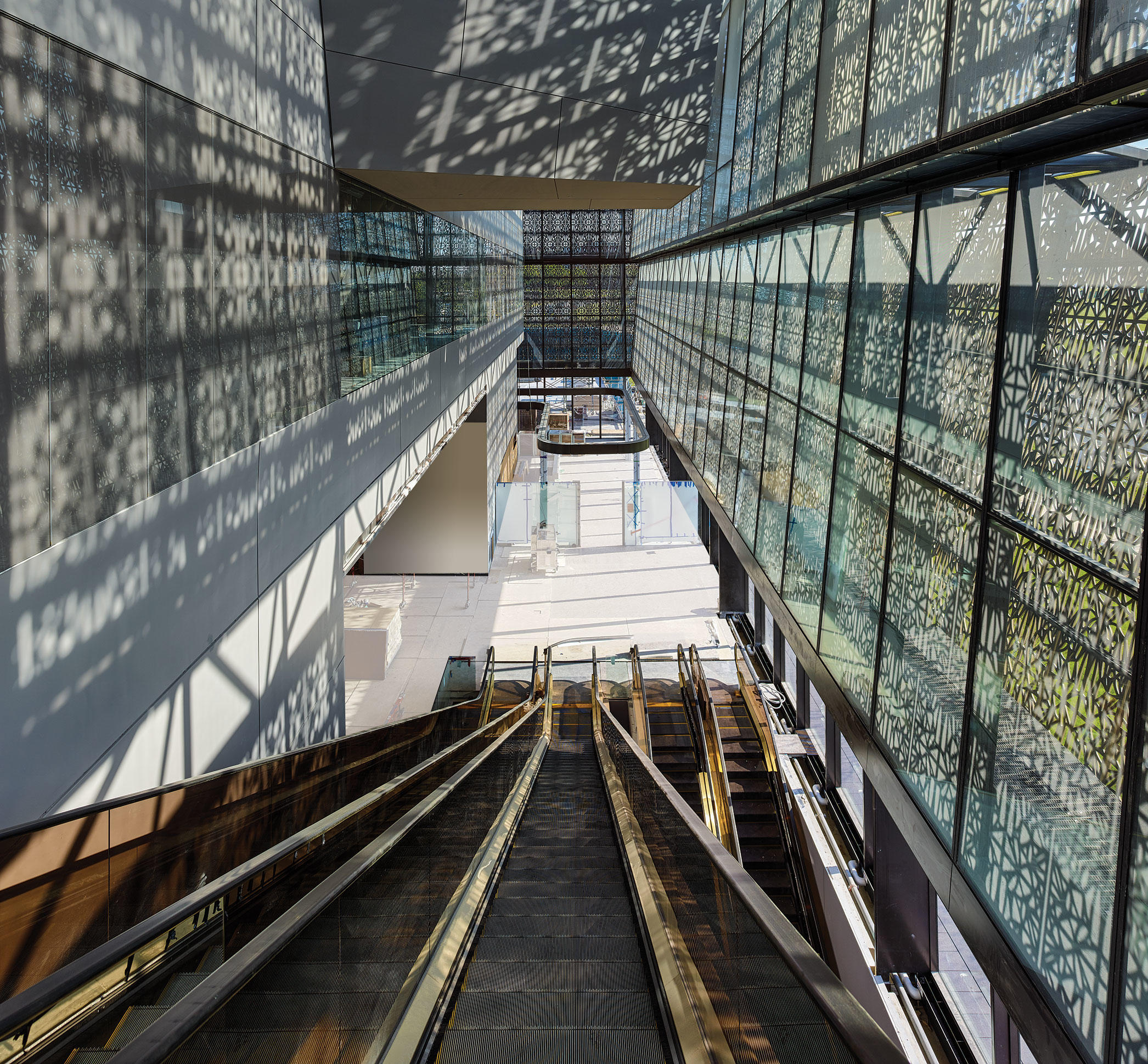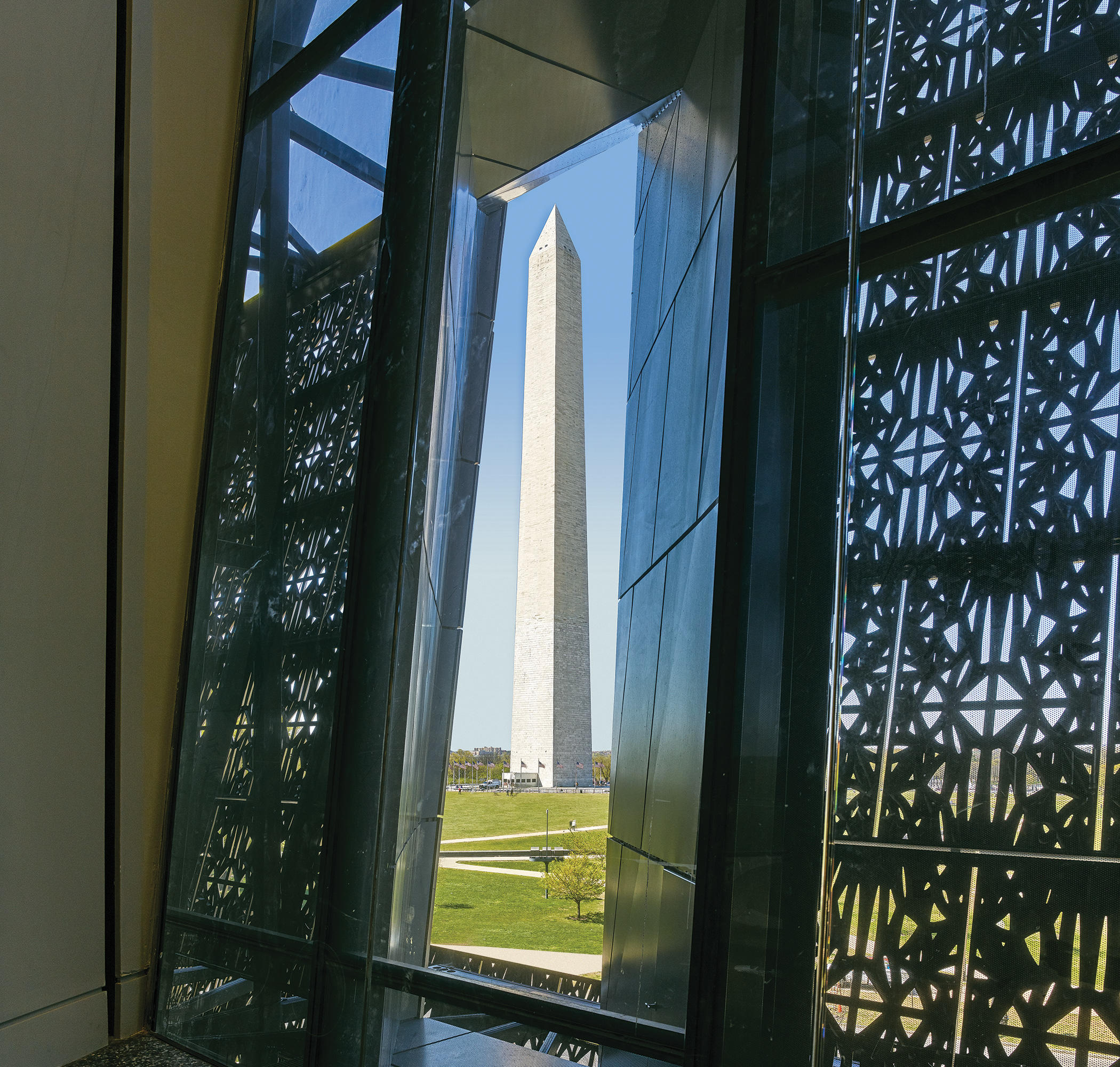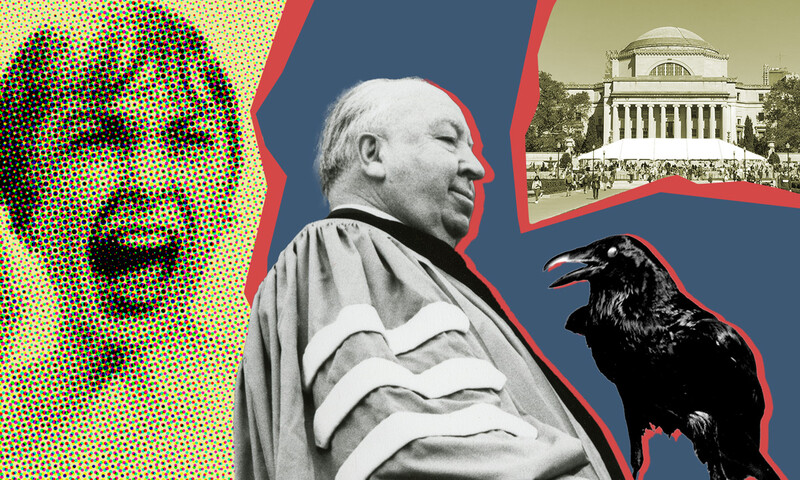On September 24, 2016, President Barack Obama ’83CC opened the Smithsonian’s National Museum of African American History and Culture — an institution, he said, that seeks to reaffirm “that African-American history is not somehow separate from our larger American story. It’s not the underside of the American story. It is central to the American story.” The four-hundred-thousand square-foot museum, designed by David Adjaye, displays more than three thousand artifacts. Mabel O. Wilson ’91GSAPP, a professor at Columbia’s Graduate School of Architecture, Planning, and Preservation and a scholar of African-American studies, wrote the official companion book to the museum. Here she highlights some of the building’s most meaningful architectural features.
DISTINCT FAÇADE
The building has a triple-tiered corona, a decorative façade that gives it a very distinct shape. It is particularly striking on the National Mall, which is dominated by classical architecture. The tiers are meant to recall hands raised in celebration, and also the West African caryatid, a ceremonial sculpture from Yorubaland, in what is now Nigeria.
SUBTLE DETAILS
The building is covered in metallic panels that morph from reddish gold to deep sepia in the changing light. The lace detail is based on wrought-iron construction that you see on railings and balconies in New Orleans, Charleston, and other parts of the American South. Most of that work was done by Black slaves who were, of course, not credited for their craftsmanship. There’s Black history hidden in plain sight everywhere; we just don’t recognize it.
OPEN SPACES
Most museums have a cloistered, enclosed interior. This museum opens into a huge space with vast floor-to-ceiling windows. You feel suspended between the inside and the outside. The space evokes the clearing field — the middle of an open field of crops — which was the only community gathering space for many slaves.
INSPIRING VIEWS
The view from the upper floors is powerful. Large windows look directly out onto the Washington Monument and, at different points, out to the Mall, the Capitol, the White House, and the city itself. Washington, DC is an important character in the African-American story; the strategically placed windows are also an important reminder that this museum is not just about African-Americans, but about the American experience as a whole.
